Search
Did you mean: Heraclius?
Summary 
Loading AI-generated summary based on World History Encyclopedia articles ...
Search Results
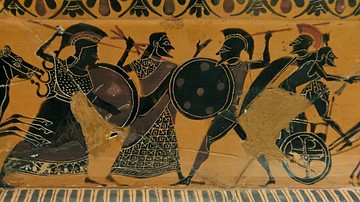
Definition
Shield of Heracles
The Shield of Heracles (also known as The Shield of Herakles, Aspis Herakleous) is a poem of 480 hexameter lines written by an unknown Greek poet in the style of Hesiod (lived 8th century BCE). It deals with the Greek hero Herakles (also...
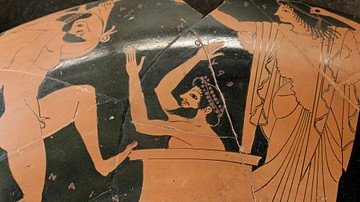
Definition
The Children of Heracles
The Children of Heracles (Heraclidae) is one of Euripides' lesser known and least popular works, as is the myth surrounding the tragedy play. Its date is also uncertain, possibly written in the late 430s or early 420s BCE. The play revolves...
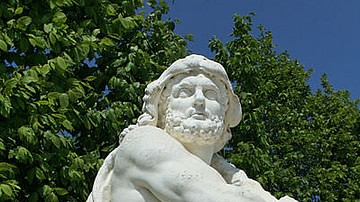
Article
The Shield of Heracles: The Complete Poem
The Shield of Heracles (also known as The Shield of Herakles and, in the original, Aspis Herakleous) is a poem of 480 hexameter lines written by an unknown Greek poet in the style of Hesiod (lived 8th century BCE). It deals with the Greek...

Definition
Women of Trachis
Women of Trachis is a Greek tragedy, one of Sophocles' (c. 496 BCE - c. 406 BCE) lesser-known works, the only one that does not deal with the aftermath of the Trojan War, rather it is concerned with the death of the Greek hero Heracles (or...
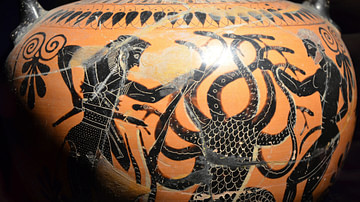
Image
Heracles and the Lernaean Hydra
Amphora with Heracles (Hercules) and the Lernaean Hydra (an ancient serpent-like water monster), circa 525 BCE, from Etruria (Italy). Photo taken at the "Monsters. Fantastic Creatures of Fear and Myth" exhibition, Palazzo Massimo alle Terme...
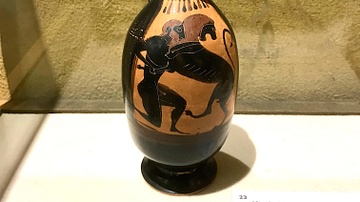
Image
Heracles fighting Nemean Lion
Hercules (or Herakles) fighting the Nemean lion on an ancient Greek clay pitcher in black figure style. In ancient Greek mythology, Hercules defeated the lion of Nemea and took the lion's skin to King Eurystheus. This specimen dates from...
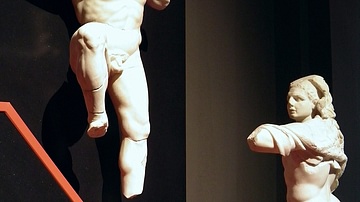
Image
Liberation of Prometheus by Heracles
Statue group depicting the liberation of Prometheus by the Greek hero Heracles. Prometheus is freed from the eagle's torment. Found in the North Hall of the Athena Terrace at Pergamon (Turkey). Dated to 100 BCE. (Pergamon Museum, Berlin)

Image
Votive Figurine of Heracles
Heracles is depicted in an aggressive pose, holding the club in his right hand and the bow in his left. From the sanctuary of Apollo Ptoios on the Ptoon Mountain, Boeotia. Argeian workshop. 480-460 BCE. (Hellenic Museum, Melbourne, Victoria...
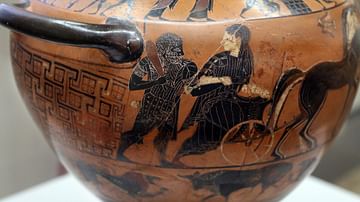
Image
Hebe Bringing Heracles to Olympus
The Ricci Hydria, showing Hebe bringing Heracles to Olympus from earth upon his apotheosis, c. 530 BCE.
National Etruscan Museum, Rome.

Definition
Selene
Selene (also known as Mene) is the personification and goddess of the moon in Greek mythology. Every night, she travels across the sky in her chariot, pulling the moon behind her. Selene is the daughter of the Titans Hyperion and Theia. She...